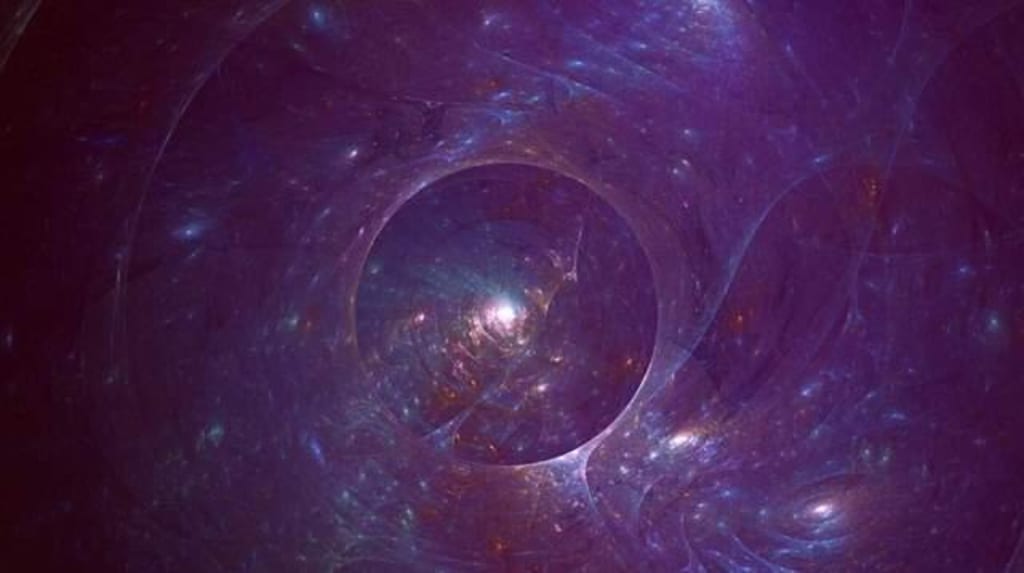What is "vacuum decay"? Can "vacuum decay" really destroy the entire universe at the speed of light?
The "vacuum decay" hypothesis

"Vacuum decay" is a hypothesis hypothesized by physicists based on quantum field theory, which is interpreted as follows: if there is a "vacuum decay" in a certain region of the universe, then The "vacuum decay" will spread from that region to all directions at the speed of light and eventually destroy the entire universe. What is this all about? Here we will talk about this topic.
What is "vacuum decay"?
To know what "vacuum decay" is, we need to understand the "energy minimum principle", which can be simply understood as, everything in the universe will spontaneously tend to a more stable state, and everything in the universe will follow "The lower the energy, the more stable" law, so everything in the universe will spontaneously tend to the lowest energy state.
"A typical example is that water always flows spontaneously from high to low because the gravitational potential energy is lower at the lower place.
The same principle of "energy minimum" applies to the cosmic vacuum, that is, if the vacuum is not in the energy minimum, then under certain conditions, the vacuum will "fall" to a lower energy state, and this process is called "vacuum decay". This process is called "vacuum decay".
Why is there such a hypothesis as "vacuum decay"?
This is related to the Riggs bison, which was discovered in 1964 by physicist Peter Riggs. In 1964, physicist Peter Riggs proposed the concept of "Riggs field" (Riggs field), which he thought was a kind of quantum field ubiquitous in cosmic space, when some elementary particles and "When some elementary particles interact with the Riggs field, are given mass.
Theoretically, the Riggs field produces a microscopic particle called the Riggs bison, and in 2013, the European Organization for Nuclear Research (CERT) discovered the Riggs bison in an experiment. Riggs bison", Peter Riggs's theory was also discovered. The theory proposed by Peter Riggs was thus confirmed.
In addition to giving mass to some elementary particles, the "Riggs field" is also closely related to the energy state of the cosmic vacuum, and it is interesting to note that the researchers found that the mass of the "Riggs bison" is about 126 Ge. If the cosmic vacuum is in the lowest energy state, the mass of the Riggs bison should be even lower.
This means that the vacuum may not be in the lowest energy state, and if this is the case, then under certain conditions, "vacuum decay" will occur.
So, can "vacuum decay" really destroy the whole universe at the speed of light?
Assuming that the vacuum is not in the lowest energy state, we can call it a "False vacuum", while the vacuum in the lowest energy state can be called a "Tyre vacuum". "(Tyre vacuum).
Researchers speculate that the reason why the "false vacuum" does not "fall" to a lower energy state is that there is an "energy barrier" that prevents it from doing so. For the sake of understanding, let's imagine it as an iron ball halfway down a hill, which tends to continue falling, but it doesn't because there is a terrain at the halfway point.

If we use a certain force to push the iron ball over the terrain blocking it, it will inevitably continue to fall.
By the same token, if we inject enough energy into the "pseudo-vacuum", the "pseudo-vacuum" can break through the "energy barrier" and move towards the "real vacuum". The "real vacuum" "falls" and the "vacuum decay" happens.
As we know, if a system shifts to a lower energy state, it releases energy, so it is easy to assume that "vacuum decay" will also release energy. According to the researchers' calculations, the energy released by the "vacuum decay" is very large, large enough to make the "pseudo-vacuum" around it break the "energy barrier" as well.
In this case, if "vacuum decay" occurs in a certain region of the universe, the energy released will trigger "vacuum decay" in the surrounding space, and if "vacuum decay" occurs in the surrounding space, it will trigger more "vacuum decay". "vacuum decay", which in turn will trigger more space to "vacuum decay" ......
In this way, an unstoppable chain reaction is formed, the effect of which is a sphere of space composed of a "real vacuum" in the universe is expanding rapidly, and in theory, the expansion speed of this sphere is the speed of light.
Since the "surface" of this sphere is filled with huge energy, many objects in the universe will fall apart in its path, and more importantly, the physical constants in the "real vacuum" will change, although we do not know Although we don't know exactly how, it is almost certain that the structure of matter in the universe after the "vacuum decay" will be completely different from what we see now.
This shows that "vacuum decay" will change the universe, but not destroy it. Of course, from our human point of view, "vacuum decay" does mean destruction, but we don't have to worry about it, because it is a hypothesis that has never been proven.
The known energies of ultra-high energy cosmic rays are as high as 3.2 x 10^20 e, which is about 30 million times the maximum output of the European Large Hadrian Collider (LAC), and even with such high energies, no "vacuum decay" is triggered, which shows that even if the above hypothesis is correct, the trigger for This shows that the conditions for triggering "vacuum decay" are so high that the possibility of its occurrence is minimal.
On the other hand, the universe is in a state of continuous expansion, which causes any two non-overlapping points in the universe to move away from each other, and the farther the distance between the two points, the faster the speed of this moving away, and when the distance reaches a certain level, the speed of this moving away from each other due to the expansion of the universe will exceed the speed of light.
This means that even if a region of the universe undergoes "vacuum decay" for special reasons (such as the "quantum tunneling effect" or advanced civilizations), it will not destroy the entire universe because the "vacuum decay" can only spread at the speed of light The reason is that "vacuum decay", which can only spread at the speed of light, cannot "catch up" with distant objects that are moving away from the region at supernatural speeds due to the expansion of the universe.
Well, that's all for today, welcome to follow us and we'll see you next time.
About the Creator
Apostolakis
To make scientific, diligence is the mother of success






Comments
There are no comments for this story
Be the first to respond and start the conversation.